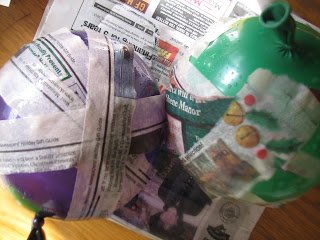Here's how it'll work:
I'm going to pack up a box with science books I no longer need or use. Some of them are duplicates of books I have, some of them are books I've never found use for despite teaching the topic covered in the book , some of them have just found their way into my collection for unknown reasons.
 |
| Some of the objects I'm considering including in the box. No final decisions have been made - and I won't share the final cut with anyone. That way it'll be a surprise for the first recipient. |
I'll send the box to the first person on the list. That person can remove as many books from the box as they wish to keep. But, each book they remove from the box must be replaced with a science book that they no longer need in their collection.
The books can be used (I expect they would be) and worn, but they should still be usable. When choosing your replacement items, please make sure your items are in a condition that you would be willing to receive. Please do not include photo copies.
The box will be repacked and sent to the next person on the list, and will continue on until it makes its way back to me at the end of the swap.
The cost of participating will be the cost of mailing a medium-sized Priority Mail flat-rate box - $10.95 if you go to the post office, $10.50 if you purchase your postage online.
We'll go with the Priority Mail option, because it will keep the cost the same for everyone and it will keep the box moving faster than the other options.
If you find one or two books that are helpful to you, you should come out ahead!
Participation is open to as many people as are interested - if the list of interested people starts to get too long, I'll start additional boxes so you're not waiting several months to get your turn!
If you're interested in participating, send me an email in the next week, and we'll get the box(es) going as soon as possible!
*Swap objects are not limited to books (though I suspect most of them will be books). Other appropriate objects include science DVDs, small games, etc. Remember the objects all need to fit in the box, along with the other objects that remain.


















